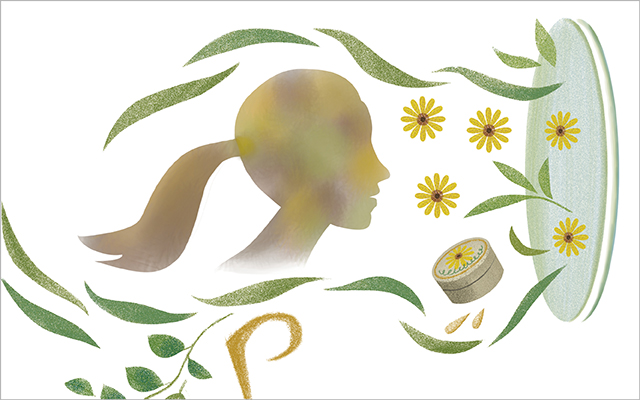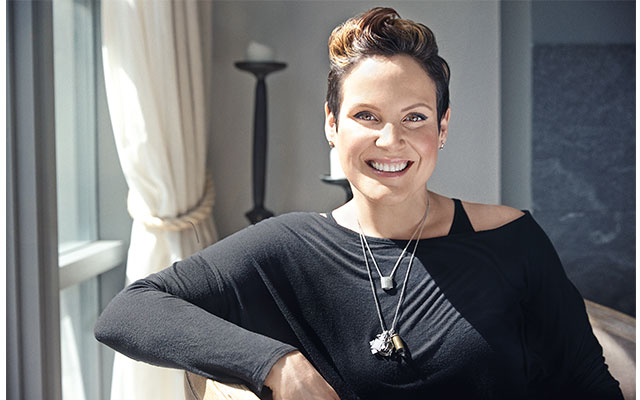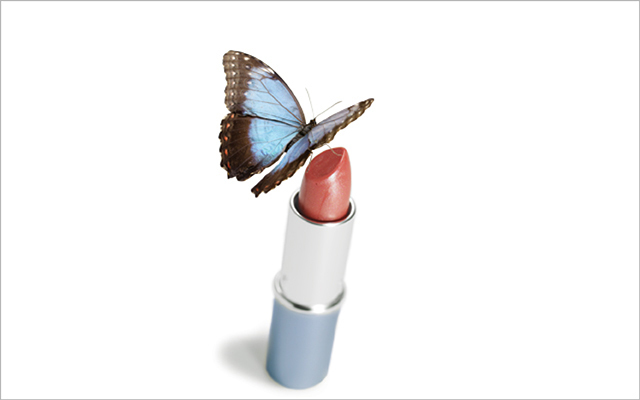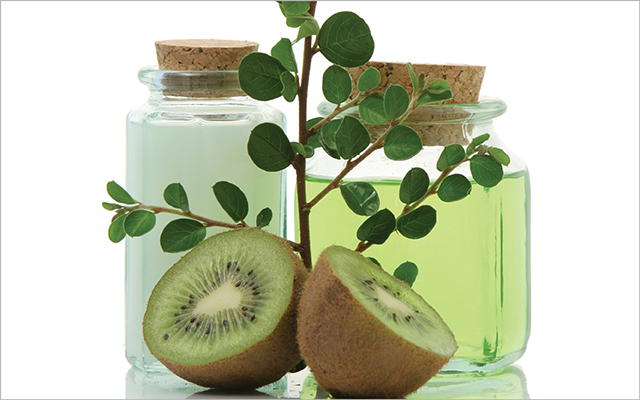Supermodel Tyra Banks drew plenty of attention last June when she posted a barefaced selfie to Instagram. “You deserve to see the real me,” her post read. “The really real me.”
Banks’s public display of her face sans makeup got more than 18,000 comments and 200,000 likes. It demonstrates a growing trend toward appreciating our faces and bodies just the way they are. This includes caring for them without bewitching chemical potions that promise to disguise or erase whatever is supposedly flawed.
Conventional beauty standards have long relied on the premise of alteration and removal. Think of the vocabulary: “slimming,” “anti-aging,” “straightening.” Something is always being hidden, camouflaged, minimized.
But this aggressive pursuit of correction and illusion is starting to be disrupted by a growing appreciation of natural beauty and a celebration of self-care over self-perfection.
These days, authenticity is hot.
The benefits of a broader, more inclusive definition of beauty — whether that means using fewer and cleaner cosmetics, loving your body as is, or letting your hair express its natural curl or color — extend far beyond one’s own life. They affect families, communities, even the culture at large. Self-acceptance often leads to accepting others more easily, too, and the world can always use more of that.
Cosmetic surgery, injections and fillers, and similar invasive procedures are still popular, of course, but it’s clear that clean, healthy, self-affirming beauty trends are gaining ground. What follows are a few of the ways people have begun to redefine beauty — and appreciate the natural beauty in each of us.
The Makeup-Free Movement
If the frequent appearance of hashtags like #makeupfree, #nomakeupselfie, #nomakeup, #makeupfreemondays, and #rawandreal is any indication, more and more women are leaving the house without makeup — at least some of the time. And mainstream beauty icons are following suit.
Banks isn’t the only famous face to post a makeup-free selfie to Instagram: Beyoncé, Chrissy Teigen, and Brooklyn Decker have done the same. French fashion house Sonia Rykiel featured a barefaced Gisele Bündchen in its fall 2014 campaign.
In her song “Try,” pop singer Colbie Caillat, 30, explores themes of self-acceptance. The song’s video features her and other women removing their makeup completely. It’s garnered more than 50 million views on YouTube, a clear indication that authentic beauty has found an audience.
For some, taking a break from makeup offers surprising emotional rewards. Lindsey Smith, a health coach and the author of 52 Ways to Love Your Body More, recently challenged herself to go makeup-free for 30 days. “To meetings, everywhere,” she says. “At the end, when I put makeup on, I cried. I didn’t feel like myself. I felt like a stranger in my body, because I have learned to really love my natural look.”
Smith calculated the time an average woman spends applying makeup over her lifetime: 3,726 hours, or 135 days.
“I thought about that when I did this challenge,” she says. Smith asked herself, Could I finally make that healthy meal? Spend more time with family? She concluded that when she did something she loved, she was taking that time back. Now she makes a point to be deliberate about using the time she saves on primping for more meaningful pursuits.
Feeling good is a beauty practice in itself, says model and former makeup artist Cindy Joseph. She’s the founder of BOOM! skincare and cosmetics, a minimalist collection of only three products, each made for enhancing, not covering, one’s natural beauty.
Joseph is not opposed to makeup, but she suggests women pare back their arsenal and consider their motivations. She advises experimenting with cosmetics “for fun” — rather than from fear, dissatisfaction, or desperation.
“Taking joy in living is a woman’s best cosmetic,” she says.
Embracing Natural Hair
Like many black women, Tyshia Ingram, 28, had long used harsh chemicals to straighten her natural curls. But a few years ago, the Philadelphia-based writer decided to quit. She’d been reading about the carcinogenic risks of straightening formulas and didn’t feel smooth hair was worth the risk. What’s more, routinely processing her hair had begun to feel like a form of self-rejection.
Ingram says it was difficult to let go of the idea that “straight hair was the prettiest,” but after she cut her hair and watched her curls grow in, she began to appreciate their beauty.
She’s not alone. The trend toward authenticity and a growing awareness of the health risks of hair relaxers have sent sales plummeting in recent years. According to consumer-research studies, chemical relaxers generated sales of $200 million in 2009. That figure dropped to $148 million in 2013, and sales are expected to fall to $72 million by 2019.
Meanwhile, product lines designed specifically for curly hair are taking off. A company called DevaCurl, for example, has experienced double-digit growth during each of the past five years. “The good news is that people are learning ways to embrace and enhance curls rather than thinking of curls as something to be ‘fixed,’” says Cal Ellis, DevaCurl’s technical training manager.
The same goes for “fixing” gray. More women have started wearing their silver with pride, and a report by British department store Harvey Nichols named gray hair a top beauty trend of 2015. There’s even a celebratory hashtag to mark the occasion: #silverhair.
The hair-coloring industry remains alive and well — a recent study reported sales of $1.5 billion in 2014 — but evidence is mounting that many have tired of the time and expense that coloring requires. And, as with relaxers, conventional dyes come with some health risks: They’re a suspected risk factor for leukemia, lymphoma, and bladder cancer. (For more on the health risks of conventional body-care products, see “Beauty Beware“.)
In her book May I Be Happy, OM Yoga founder Cyndi Lee, 63, describes reaching a point where she felt trapped by hair dye. She’d become a “fake brunette with blonde highlights who spends hundreds of dollars and hours to maintain the façade.” Though her stylist had cautioned her that she’d look “a lot older,” Lee let her gray roots grow in, then cut it short. Now, she says, her hair often gets compliments. And she no longer feels trapped.
A Shift Towards Clean Cosmetics
Little more than a decade ago, the clean-cosmetics industry included just a few isolated brands. Not so today.
In 2015, Shashi Batra, who helped bring cosmetic behemoth Sephora to the United States, launched Credo Beauty, which exclusively offers natural-beauty brands that meet a rigorous standard of purity and sustainability. It now boasts a robust online operation and a brick-and-mortar storefront in San Francisco.
There are dozens of clean-beauty sites online, like Spirit Beauty Lounge and the Detox Market, whose founders curate products based on their ingredient quality, safety, and efficacy — not simply how dramatically the product will change your look.
And high-profile brands are following their lead. Celebrity facialist Tracie Martyn, whose clients include Kate Winslet and Madonna, uses and promotes plant-based products.
The global demand for organic personal-care products is expected to reach $13.2 billion by 2018, according to a report by Transparency Market Research. The body-care aisles of Target and Whole Foods are lined with brands boasting clean ingredient profiles. In 2013, mega-retailer Walmart began requiring suppliers to disclose certain hazardous chemicals in the cosmetics, fragrances, and other personal-care products sold in its stores.
Stacy Malkan, cofounder of the Campaign for Safe Cosmetics and author of Not Just a Pretty Face: The Ugly Side of the Beauty Industry, attributes the growing popularity of clean cosmetics to two factors: rising consumer consciousness about the links between toxic ingredients and health problems, and greater connectedness among consumers.
“People are no longer getting their information directly from companies,” Malkan says. “They’re getting it from friends and trusted sources, and sharing what’s good and what works.”
Companies that want to survive are adapting quickly, Malkan explains. “They’re giving consumers what they want, which is clean products and full transparency about what’s in them.”
The enthusiasm for cleaner body-care products also crosses gender lines; sales of natural products marketed to men are on the rise. In 2013, men spent more on toiletries than shaving gear — a historic first — and many are opting for cleaner products from brands like Bulldog, Herban Cowboy, and Burt’s Bees.
Men account for 40 percent of the customers at Soapwalla, a line of clean skincare products for sensitive skin, says founder Rachel Winard. And well-established companies like EO, one of the first personal-care companies to offer certified organic products, have also launched lines specifically for men.
Room for Improvement
For all the progress we’ve seen in the realms of beauty, there are still plenty of areas where we’d love to see bigger strides. Here are just a few:
Body Acceptance
Lillian Bustle is a well-known burlesque dancer in New York City who last year delivered a popular TEDx talk on the challenge of accepting your body, no matter its size. Because, let’s face it, there’s only a small percentage of people for whom a healthy weight means matchstick thin.
Bustle mentions some alarming statistics in her talk: The No. 1 wish for girls 11 to 17 is to be thinner. Size discrimination in the workplace has increased by 66 percent over the past three decades; heavier women now earn up to 6.2 percent less than their thin counterparts.
In spite of those trends, Bustle says, “We are on the edge of a brave new world of body love and acceptance.” She points to a 2012 study published in the journal PLOS One on “cognitive adaptation effect.” It found that preferences for certain body types aren’t fixed.
A group of 57 women were shown images of female bodies of various sizes and asked to rate their preferences. Researchers found a direct correlation between the number of images of larger women the subjects viewed and the likelihood they would express a preference for that body size. So, Bustle concludes, “The more we see one kind of body, the more we like that kind of body.”
One way to improve self-acceptance is to increase our “visual diet,” making sure that we look beyond the wafer-thin figures in fashion magazines. “The more that body diversity is normalized in our minds,” Bustle says, “the kinder we can be to ourselves and to our bodies.”
Fragrance Transparency
Producers of body-care products are not required to reveal what their fragrances contain. These ingredients are considered proprietary information.
Many synthetic fragrances contain phthalates, which have been linked to a variety of health problems — most notably endocrine disruption and birth defects.
“Fragrance-free” products are not necessarily safer, as they may contain troublesome masking agents.
A clean consumer’s best bet is to stick with products that use only fragrances that are essential oil– or plant-based (they’re more expensive, so this will be noted on the label).
Very few products bear the green USDA Organic label (it requires a product’s ingredients be at least 95 percent certified organic and not include any synthetic preservatives) so formulas bearing that seal are a safer bet. When in doubt, check a product’s safety rating in the Environmental Working Group’s Skin Deep database; it considers synthetic fragrances a toxic ingredient.
Regulatory Standards
After years of consumer pressure, the personal-care monolith Johnson & Johnson finally began to phase out parabens, phthalates, triclosan, and formaldehyde in its products in 2013. All had been found to have serious health risks, including endocrine disruption and cancer.
This is great news, but these changes remain at the discretion of manufacturers, which means safety standards in the United States remain inconsistent. Consumers have to be vigilant if they want to avoid toxic ingredients, and many simply don’t know that body-care products can carry health risks. Greenwashing, in which products are packaged and marketed as natural but still contain plenty of suspect ingredients, remains a problem, largely because the term “natural” remains unregulated for cosmetics and body-care products.
Personal-care safety legislation that defends the rights of consumers is in the works but is pending congressional approval.
To learn more about how you can help advocate for universally safe personal-care products, visit www.safecosmetics.org.





This Post Has 0 Comments